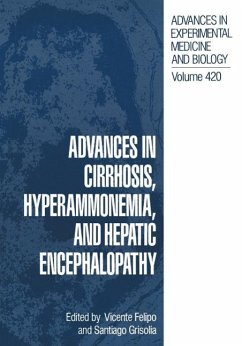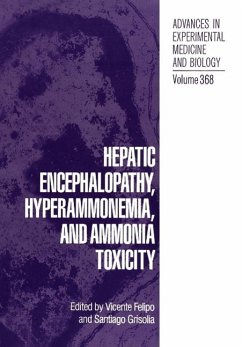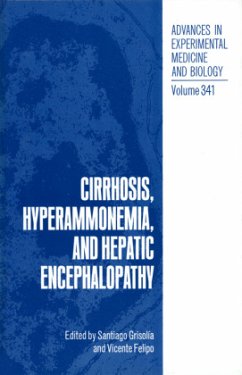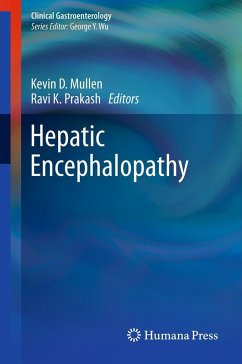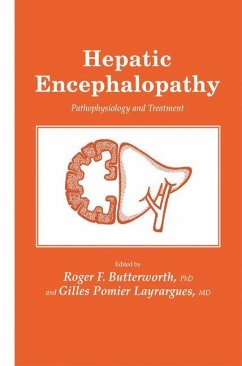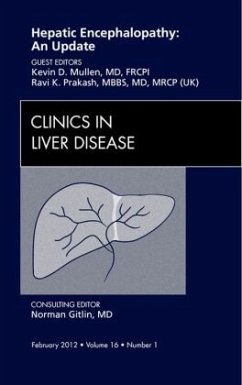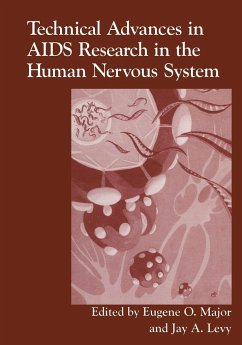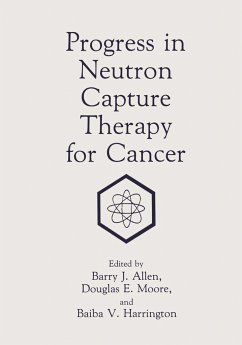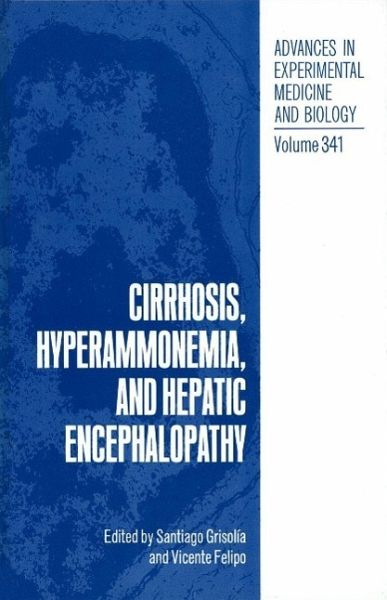
Cirrhosis, Hyperammonemia, and Hepatic Encephalopathy
Versandkostenfrei!
Versandfertig in 6-10 Tagen
61,99 €
inkl. MwSt.

PAYBACK Punkte
31 °P sammeln!
Control of Urea Synthesis and Ammonia Detoxification.- Brain Metabolism in Hepatic Encephalopathy and Hyperammonemia.- Ammonia Metabolism in Mammals: Interorgan Relationship.- Clinical Manifestations and Therapy of Hepatic Encephalopathy.- Nutritional Considerations in Patients with Hepatic Failure.- Do Benzodiazepine Ligands Contribute to Hepatic Encephalopathy?.- Effects of Hyperammonemia on Neuronal Function: NH4+, IPSP Cl-Extrusion.- Activation of NMDA Receptor Mediates the Toxicity of Ammonia and the Effects of Ammonia on the Microtubule-Associated Protein MAP-2.- Modulation of the Exocyt...
Control of Urea Synthesis and Ammonia Detoxification.- Brain Metabolism in Hepatic Encephalopathy and Hyperammonemia.- Ammonia Metabolism in Mammals: Interorgan Relationship.- Clinical Manifestations and Therapy of Hepatic Encephalopathy.- Nutritional Considerations in Patients with Hepatic Failure.- Do Benzodiazepine Ligands Contribute to Hepatic Encephalopathy?.- Effects of Hyperammonemia on Neuronal Function: NH4+, IPSP Cl-Extrusion.- Activation of NMDA Receptor Mediates the Toxicity of Ammonia and the Effects of Ammonia on the Microtubule-Associated Protein MAP-2.- Modulation of the Exocytotic Release of Neurotransmitter Glutamate by Protein Kinase C.- Controls of Cerebral Protein Breakdown.- Two Different Families of NMDA Receptors in Mammalian Brain: Physiological Function and Role in Neuronal Development and Degeneration.- Glanglioside GM1 and its Semisynthetic Lysogangliosides Reduce Glutamate Neurotoxicity by a Novel Mechanism.- Contributors.





